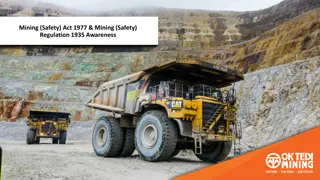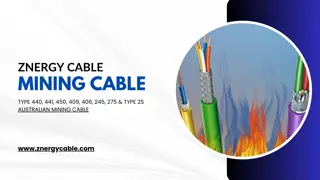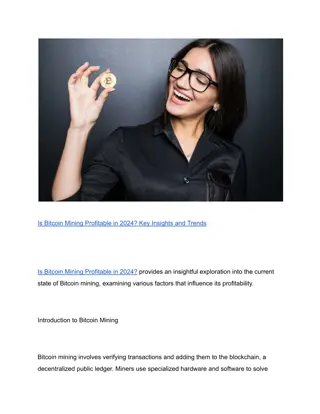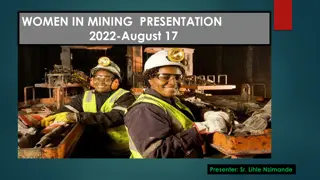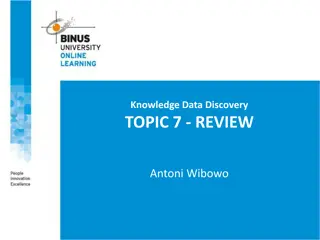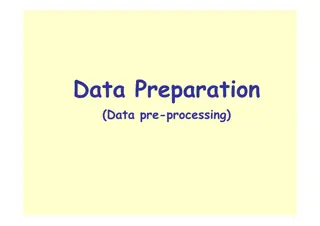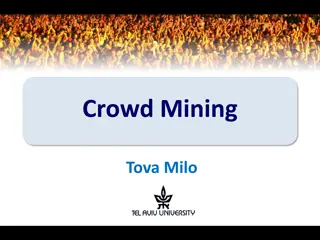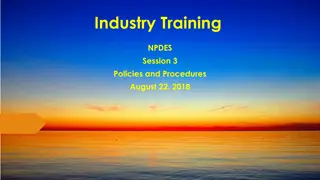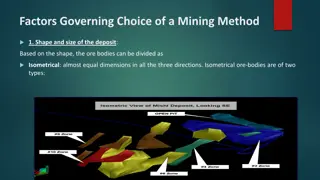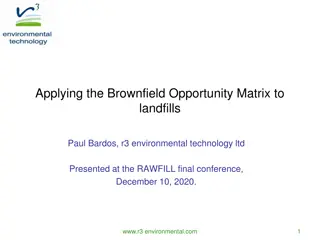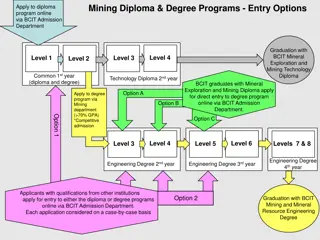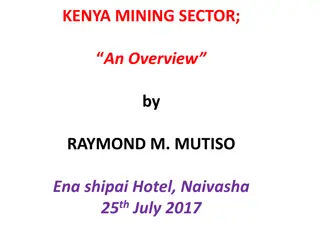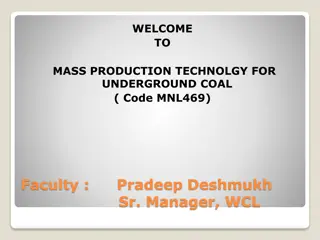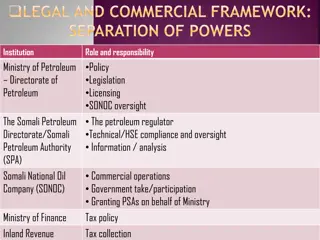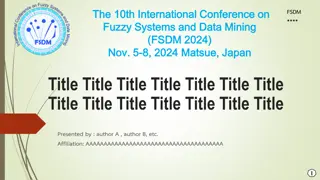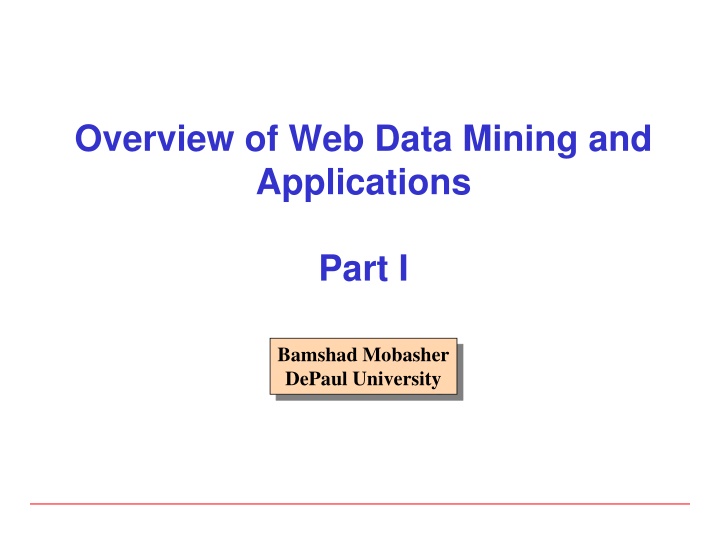
Unveiling the Importance of Web Mining in Today's Digital World
Discover the significance of web mining for extracting valuable insights from online data, its applications in predictive user modeling, and the different types such as web usage, structure, and content mining. Learn why leveraging big data and effective data processing are crucial for success in the modern digital landscape.
Download Presentation

Please find below an Image/Link to download the presentation.
The content on the website is provided AS IS for your information and personal use only. It may not be sold, licensed, or shared on other websites without obtaining consent from the author. If you encounter any issues during the download, it is possible that the publisher has removed the file from their server.
You are allowed to download the files provided on this website for personal or commercial use, subject to the condition that they are used lawfully. All files are the property of their respective owners.
The content on the website is provided AS IS for your information and personal use only. It may not be sold, licensed, or shared on other websites without obtaining consent from the author.
E N D
Presentation Transcript
Overview of Web Data Mining and Applications Part I Bamshad Mobasher DePaul University
What is Web Mining From its very beginning, the potential of extracting valuable knowledge from the Web has been quite evident Web mining is the collection of technologies to fulfill this potential Web Mining Definition application of data mining and machine learning techniques to extract useful knowledge from the content, structure, and usage of Web resources. But, why is this important and why is it more relevant than at any other time during the history of the Web? 2
Whats needed to succeed in the new world of big data Internet? Leveraging big data Many of these applications manage, clean, and preprocess integrate often unstructured data from across many channels Biggest challenge is in data distillation and preprocessing Effective use of data mining and analytics No longer just a luxury but an integral part of systems Especially important to leverage and effectively use user behavior and social data Real-time deployment of models Needed for effective delivery of relevant, targeted, personalized content Especially important on the Web: Predictive User Modeling 4
Predictive User Modeling The Problem Dynamically serve customized content (ads, products, deals, recommendations, etc.) to users based on their profiles, preferences, or expected interests Why we need it? Information spaces are becoming much more complex for user to navigate (huge online repositories, social networks, mobile applications, blogs, .) For businesses: need to grow customer loyalty / increase sales Industry Research: successful online retailers are generating as much as 35% of their business from recommendations/targeted content delivery 5
Types of Web Mining Web Mining Web Usage Mining Web Structure Mining Web Content Mining 6
Types of Web Mining Web Mining Web Usage Mining Web Structure Mining Web Content Mining Extracting useful knowledge from the contents of Web documents or other semantic information about Web resources 7
Types of Web Mining Web Mining Web Usage Mining Web Structure Mining Web Content Mining Content data may consist of text, images, audio, video, structured records from lists and tables, or item attributes from backend databases. 8
Types of Web Mining Web Mining Web Usage Mining Web Structure Mining Web Content Mining Applications: document clustering or categorization topic identification / tracking concept discovery focused crawling content-based personalization intelligent search tools 9
Types of Web Mining Web Mining Web Usage Mining Web Structure Mining Web Content Mining Extracting interesting patterns from user interactions with resources on one or more Web sites 10
Types of Web Mining Web Mining Web Usage Mining Web Structure Mining Web Content Mining Applications: user and customer behavior modeling Web site optimization e-customer relationship management Web marketing targeted advertising recommender systems 11
Types of Web Mining Web Mining Web Usage Mining Web Structure Mining Web Content Mining Discovering useful patterns from the hyperlink structure connecting Web sites or Web resources 12
Types of Web Mining Web Mining Web Usage Mining Web Structure Mining Web Content Mining Data sources include the explicit hyperlink between documents, or implicit links among objects (e.g., two objects being tagged using the same keyword). 13
Types of Web Mining Web Mining Web Usage Mining Web Structure Mining Web Content Mining Applications: document retrieval and ranking (e.g., Google) discovery of hubs and authorities discovery of Web communities social network analysis 14
Web Content Mining :: common approaches and applications Basic notion: document similarity Most Web content mining and information retrieval applications involve measuring similarity among two or more documents Vector representation facilitates similarity computations using vector-space operations (such as Cosine of the angle between two vectors) Examples Search engines: measure the similarity between a query (represented as a vector) and the indexed document vectors to return a ranked list of relevant documents Document clustering: group documents based on similarity or dissimilarity (distance) among them Document categorization: measure the similarity of a new document to be classified with representations of existing categories (such as the mean vector representing a group of document vectors) Personalization: recommend documents or items based their similarity to a representation of the user s profile (may be a term vector representing concepts or terms of interest to the user) 15
Web Content Mining :: example clustered search results Can drill down within clusters to view sub- topics or to view the relevant subset of results 16
Web Content Mining :: example personalized content delivery Google's personalized news is an example of a content-based recommender system which recommends items (in part) based on the similarity of their content to a user s profile (gathered from search and click history) 17
Web Structure Mining :: graph structures on the Web The structure of a typical Web graph Web pages as nodes hyperlinks as edges connecting two related pages Hyperlink Analysis Hyperlinks can serve as a tool for pure navigation But, often they are used to point to pages with authority on the same topic as the source page (similar to a citation in a publication) Some interesting Web structures* 18
Web Structure Mining :: example Google s PageRank algorithm Basic idea: Rank of a page depends on the ranks of pages pointing to it Out Degree of page is the number of edges pointing away from it used to compute the contribution of the page to those to which it points The final PageRank value represents the probability that a random surfer will reach the page d is the prob. that a random surfer chooses the page directly rather than getting there via navigation Illustration of PageRank propagation 19
Web Structure Mining :: example Hubs and Authorities Basic idea Authority comes from in-edges Being a hub comes from out-edges Mutually re-enforcing relationship A good authority is a page that is pointed to by many good hubs. A good hub is a page that points to many good authorities. Together they tend to form a bipartite graph This idea can be used to discover authoritative pages related to a topic HITS algorithm Hypertext Induced Topic Search Hubs Authorities 20
Web Structure Mining :: example online communities Basic idea Web communities are collections of Web pages such that each member node has more hyperlinks (in either direction) within the community than outside the community. Typical approach: Maximal- flow model * Ex: separate the two subgraphs with any choice of source node (left subgraph) and sink node (right subgraph), removing the three dashed links Community 2 Community 1 Source node sink * Source: G. Flake, et al. Self-Organization and Identification of Web Communities , IEEE Computer, Vol. 35, No. 3, pp. 66-71, March 2002 . 21
Web Usage Mining The Problem: analyze Web navigational data to Find how the Web site is used by Web users Understand the behavior of different user segments Predict how users will behave in the future Target relevant or interesting information to individual or groups of users Increase sales, profit, loyalty, etc. Challenge Quantitatively capture Web users common interests and characterize their underlying tasks 22
Applications of Web Usage Mining Electronic Commerce design cross marketing strategies across products evaluate promotional campaigns target electronic ads and coupons at user groups based on their access patterns predict user behavior based on previously learned rules and users profiles present dynamic information to users based on their interests and profiles: Web personalization Effective and Efficient Web Presence determine the best way to structure the Web site identify weak links for elimination or enhancement prefetch files that are most likely to be accessed enhance workgroup management & communication Search Engines Behavior-based ranking 23
Data Mining and Personalization Personalization: Killer App for big data analytics Tangible successes both in the research and in industrial applications recommender systems personalized Web agents user adaptive systems Web marketing & targeted advertising personalized search Sophisticated modeling approaches based on both predictive and unsupervised DM techniques 24
Web Usage Mining In part 2 of this overview we will discuss Web usage mining and its applications in more detail 25

